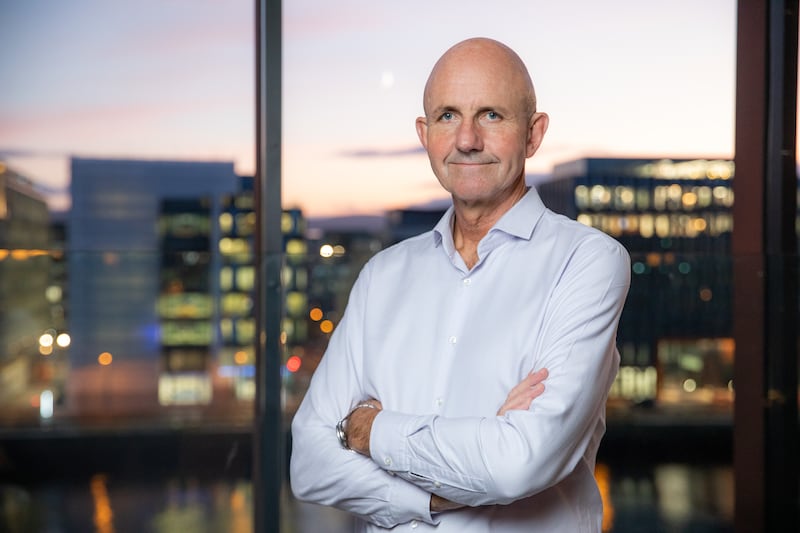There are still pockets of the State that are poorly served when it comes to broadband connectivity, which limits remote-working options for people living in them. So, how is the roll-out of the National Broadband Plan progressing and how can alternatives such as 5G mobile help improve connectivity?
Massimiliano Mascherini is head of the Social Policy unit at the European Foundation for the Improvement of Working and Living Conditions. Eurofound, as it is commonly known, is an EU agency providing knowledge to assist in the development of better social, employment and work-related policies. His unit has undertaken projects to investigate how rural and urban areas are diverging in terms of economic and social performance.

“As part of our research, we have found the main divide facing the European Union, and that includes Ireland, is the divide between rural and urban areas. We found that rural areas tend to have more traditional values in comparison to cities, which is reflected in their political behaviour,” says Mascherini.
“There is also a clear divide in terms of economic performance. GDP per capita in European urban areas is higher than in rural areas. In the past 15 years income per capita has increased in both areas but the difference is increased in urban areas – so we are all richer but those in urban areas are richer than in rural.”
READ MORE
Part of the reason has been globalisation, which makes it cheaper to set up a factory in places such as China or India than in the rural, greenfield sites in Europe.
“In addition, urban areas have attracted a high level of human capital with the explosion of the service sector,” says Mascherini.
While rural housing can be more cost effective, larger and exposed to less pollution, access to public transport, education and high-speed internet can be limited.
As Mascherini explains: “When Covid began we thought people who could work from home would all move into the rural areas but lack of services, including the internet, meant it did not happen.”
Good connectivity is vital in today’s always-on digital society. Broadband is the lifeline of connectivity, enabling and facilitating the possibility of remote working. Access to excellent broadband can support high quality remote working capabilities, including video conferencing, file sharing and instant updates. Without broadband, Irish society would not be as advanced and would be unable to support remote working business models.

Karl McDermott, head of connected solutions at Three Ireland, believes today’s telecommunications providers are continuously advancing connectivity capabilities, introducing faster speeds and greater reliability through fibre broadband, 4G and 5G networks.
“In terms of the minimum standard required for modern living, the Government has outlined that speeds of 30 Mbps or more is an adequate speed for connectivity today; however, each role and its connectivity requirements will vary depending on their needs,” says McDermott.
“5G is already up to 10 times faster than 4G. Three has over 90 per cent 5G population coverage and our Fixed Wireless Access (FWA) products now provide Business customers with a viable and competitive alternative to wired broadband (fibre to home/ premises) in cities, towns and rural locations with 5G coverage.”
5G also provides the ability to guarantee broadband speeds and latency down to individual users. 5G Standalone, recently launched by Three, will allow dedicated bandwidth for devices or even for specific applications. This brings the features of fibre optic to broadband connections over the air. And as well as dedicated bandwidth 5G provides extremely low latency, which will enable future applications such as virtual reality, autonomous cars and factory automation systems.
Aishling Hyland, digital programme officer and broadband officer with Fingal County Council, believes that access to high-speed broadband is essential to enable people to work remotely.

“Without connectivity remote work is simply not a viable option for modern-day working,” says Hyland. “As Fingal broadband officer, my role is to support the roll-out of broadband infrastructure across the county and provide a single point of contact within the county for engagement with telecommunications providers, and to assist National Broadband Ireland in the efficient roll-out of the National Broadband Plan.
“Fingal County Council is committed to and supports the National Broadband Plan and the buildout of all essential telecommunications infrastructure. High-speed broadband is a necessity for everyone and is an enabler of any modern functioning economy.
“Fingal County Council will continue to assist in the roll-out of the national broadband plan to help citizens, schools, communities and businesses in Fingal to access modern connectivity.”
In the case of spotty access to high-speed connectivity, there are a number of hubs in Fingal that remote workers can access. These include the Drinan Enterprise Centre in Swords, BASE Enterprise Centre in Mulhuddart and BEaT Enterprise Centre in Balbriggan.
Three is working hard to solve the problems of connectivity in remote locations. McDermot advises remote workers to evaluate all connectivity options in their area. There will be fixed, cable and mobile offers in many locations. However, speed and availability may differ for each service depending on the area. Just because there is a fixed connection does not mean the quality will be good. Most operators have websites where you can check the quality of the broadband or mobile data in a particular location.
“Any remote worker who has access to multiple broadband types should consider having both a wired and a wireless broadband connection if they absolutely need to be online 100 per cent of the time,” says McDermott. “It can be very frustrating if the broadband goes down halfway through a Teams call with your most important customer or during the Champions League final.”
Hyland sees the many positive impacts good connectivity has on a community: “In schools, teachers and children can access educational resources, online tutorials and language classes that might be otherwise out of reach.
“Good connectivity supports economic growth, enabling business owners and employees to work remotely. This can affect the climate by reducing carbon and on quality of life by reducing commuting times and creating a better work/life balance.”













